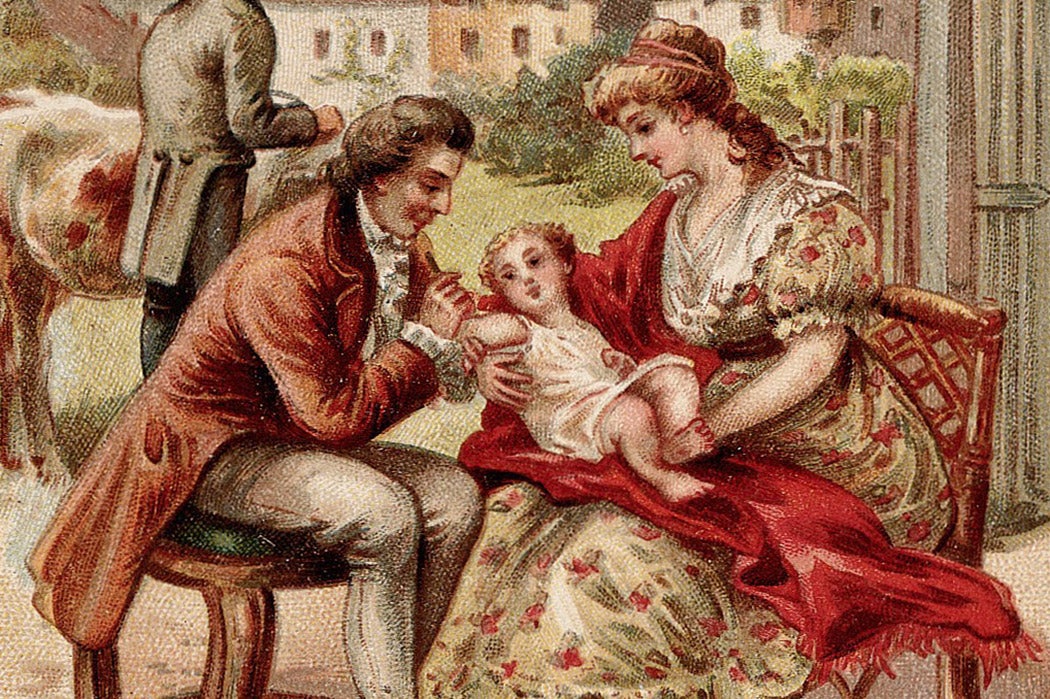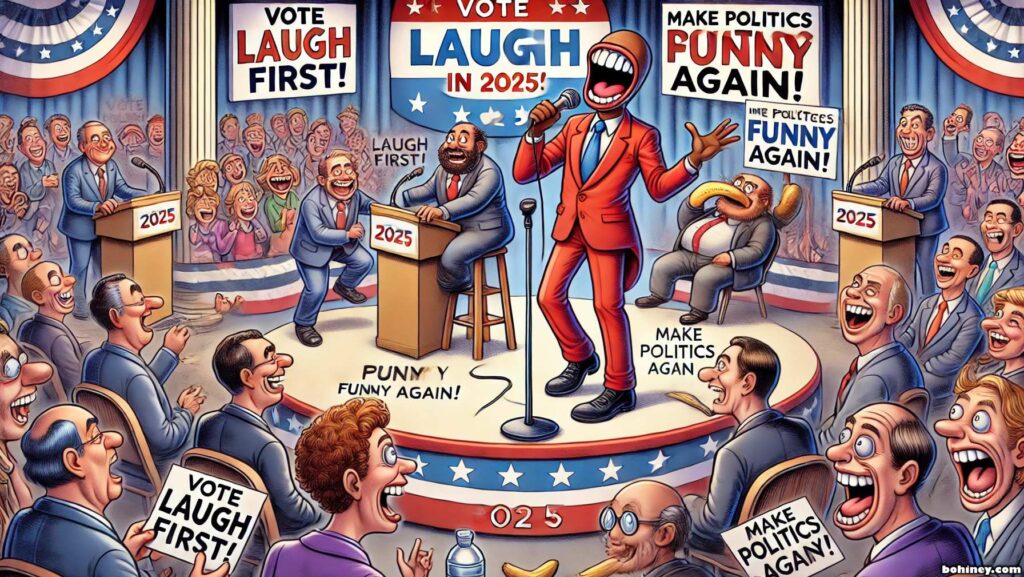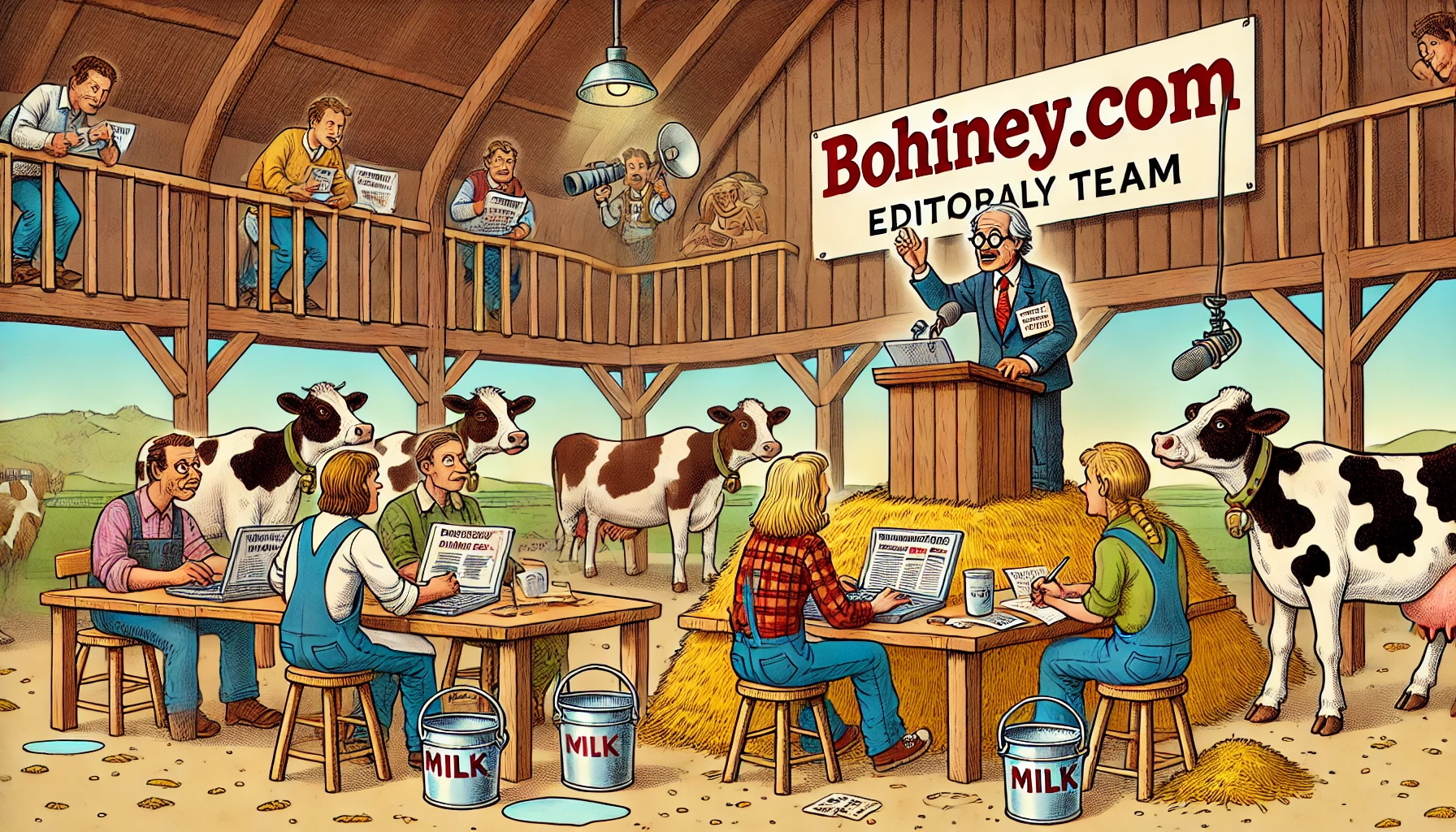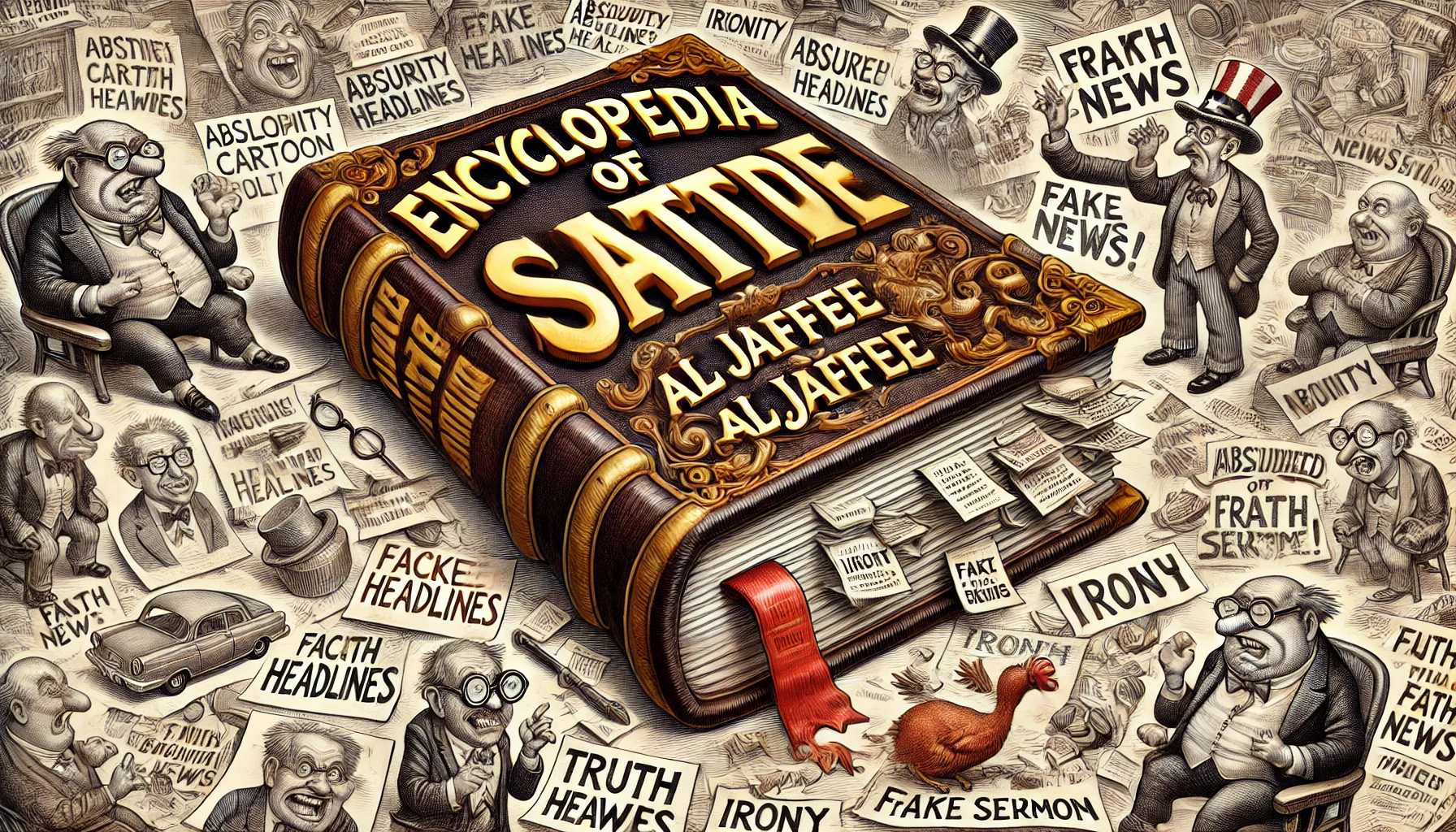
Enlightenment
Jabs:
How
Thinkers
Wielded
Humor
for
Change
The
Enlightenment—spanning
broadly
from
the
late
17th
to
the
early
19th
century—was
a
period
of
vibrant
intellectual
ferment.
Philosophers,
essayists,
and
satirists
across
Europe
challenged
established
authority,
questioned
tradition,
and
promoted
reason,
science,
and
universal
rights.
While
we
often
associate
the
Enlightenment
with
serious
treatises
by
the
likes
of
John
Locke,
Immanuel
Kant,
and
Jean-Jacques
Rousseau,
humor
was
a
formidable
weapon
in
many
thinkers’
arsenals.
Through
wit
and
satire,
Enlightenment
writers
managed
to
circumvent
censorship,
expose
hypocrisy,
and
deliver
stinging
critiques
of
both
Church
and
State.
This
approximately
3,200-word
exploration
delves
into
how
comedic
expression
became
a
catalyst
for
social
and
political
change
during
the
Enlightenment,
focusing
on
key
figures,
diverse
literary
forms,
and
the
broader
cultural
contexts
that
shaped
their
jabs
at
power.
Important
Link
For
a
deeper
dive
into
Enlightenment
satire
and
its
broader
philosophical
implications,
consult
The
Stanford
Encyclopedia
of
Philosophy
for
entries
on
key
thinkers,
historical
contexts,
and
the
role
of
irony
in
shaping
modern
discourse.
I.
Defining
the
Enlightenment
and
Its
Comedic
Undercurrents
The
term
“Enlightenment”
generally
denotes
a
transnational
intellectual
movement
emerging
in
late
17th-century
Europe,
flourishing
in
the
18th
century,
and
influencing
global
thought
well
into
the
19th.
Enlightenment
thinkers
championed
reason,
empirical
inquiry,
religious
tolerance,
and
individual
liberty.
The
printing
press,
expanding
literacy,
and
more
accessible
education
helped
these
ideas
permeate
both
elite
and
bourgeois
circles.
Yet
behind
the
polished
image
of
the
philosophes
lay
a
robust
culture
of
comedic
writing.
A
Climate
Ripe
for
Satire
While
monarchy,
aristocracy,
and
clerical
authorities
often
still
held
legal
and
social
dominance,
the
cracks
in
the
old
regime
were
beginning
to
show.
Enlightenment
writers
recognized
the
potency
of
laughter
in
exposing
absurdities
and
galvanizing
public
opinion.
Many
of
them,
faced
with
censorship
laws
that
criminalized
overt
criticism
of
the
Crown
or
the
Church,
learned
to
embed
their
critiques
in
comedic
forms—novels,
plays,
letters,
dialogues,
or
faux
travel
narratives—camouflaging
radical
ideas
in
witty
packaging.
The
Legacy
of
Earlier
Satirists
Enlightenment
satirists
inherited
a
rich
comedic
tradition.
The
17th
century
witnessed
figures
like
Molière
in
France
and
John
Donne
in
England
who
had
begun
poking
at
moral
and
social
pretensions.
In
the
Restoration
era,
dramatists
such
as
William
Wycherley
and
Aphra
Behn
molded
comedic
scripts
laced
with
social
critique.
Swift’s
savage
irony
in
“A
Modest
Proposal”
(1729)
offered
an
early
blueprint
for
how
comedic
hyperbole
could
awaken
moral
outrage.
Within
this
continuum,
Enlightenment
satirists
refined
comedic
expression
to
serve
the
cause
of
philosophical,
political,
and
religious
reform.
II.
The
Public
Sphere:
Coffeehouses,
Salons,
and
Pamphlets
The
Enlightenment
unfolded
amid
a
rapidly
evolving
“public
sphere”—a
concept
popularized
by
sociologist
Jürgen
Habermas—where
individuals
gathered,
discussed,
and
shaped
public
opinion.
Coffeehouses
in
London,
Parisian
salons,
and
reading
clubs
throughout
Europe
became
hotbeds
for
debate.
Writers
discovered
that
humorous
pamphlets
or
comedic
short
essays
spread
quickly
among
these
discussion
circles,
enabling
them
to
bypass
more
formal
censorship
channels.
Coffeehouse
Culture
-
London’s
Coffeehouses:
In
18th-century
London,
coffeehouses
served
as
“penny
universities”
where
merchants,
tradespeople,
journalists,
and
aristocrats
mingled.
Satirical
periodicals
like
The
Spectator
(founded
by
Joseph
Addison
and
Richard
Steele)
found
an
eager
readership
here.
While
Addison
and
Steele’s
style
was
gentler
(Horatian)
rather
than
scathing,
their
comedic
jabs
at
fops,
gossip-mongers,
and
pedants
stirred
conversation
among
the
rising
middle
classes. -
French
Cafés
and
Literary
Salons:
Meanwhile,
in
Paris,
cafés
and
salons
hosted
Enlightenment
philosophes,
including
Voltaire,
Diderot,
and
Montesquieu.
Though
these
venues
were
often
patronized
by
aristocratic
or
bourgeois
elites,
comedic
critiques
of
Church
doctrines
or
the
monarchy
circulated
discreetly.
The
wit
of
Voltaire
became
legendary,
shaping
entire
evenings’
debates
around
pointed
bon
mots
that
revealed
the
era’s
absurdities.
Pamphlet
Wars
and
Satirical
Journalism
-
Pamphlets:
Cheaply
printed
and
easily
distributed,
pamphlets
were
a
favorite
vessel
for
comedic
commentary.
Whether
lampooning
a
bishop’s
luxurious
lifestyle
or
ridiculing
the
mercantile
greed
of
a
colonial
governor,
pamphlets
spread
humor-laced
ideas
to
audiences
eager
for
intellectual
novelty. -
Newspapers
and
Periodicals:
Over
the
18th
century,
newspapers
grew
in
importance,
blending
reportage
with
satirical
commentary.
In
Britain,
satirical
inserts
on
Parliamentary
debates
gained
popularity,
introducing
the
public
to
comedic
critiques
of
government
policies.
In
France,
clandestine
or
pseudonymous
newspapers
mocked
aristocratic
excess,
sometimes
culminating
in
royal
edicts
cracking
down
on
“seditious
laughter.”
III.
Voltaire:
The
Master
of
Razor-Sharp
Wit
One
cannot
discuss
Enlightenment
satire
without
spotlighting
Voltaire
(François-Marie
Arouet,
1694–1778).
A
polymath—playwright,
historian,
philosopher—Voltaire
spent
much
of
his
career
in
a
precarious
dance
with
censorship,
exile,
and
royal
favor.
His
comedic
artillery
ranged
from
verse
epigrams
that
stung
the
vanity
of
courtiers
to
entire
philosophical
novellas
that
ridiculed
religious
bigotry.
“Candide”
and
Philosophical
Pessimism
-
Candide
(1759)
stands
out
as
Voltaire’s
masterpiece
of
satirical
storytelling.
The
short
novel
skewers
the
philosophical
optimism
of
Gottfried
Wilhelm
Leibniz—often
summarized
as
“all
is
for
the
best
in
the
best
of
all
possible
worlds”—by
subjecting
its
naïve
protagonist,
Candide,
to
one
calamity
after
another. -
Comedic
Devices:
Exaggerated
misfortunes,
deadpan
irony,
and
repeated
comedic
motifs
(like
Dr.
Pangloss’s
unwavering
optimism)
highlight
the
disconnect
between
philosophical
theory
and
human
suffering.
The
comedic
effect
shocks
readers
into
questioning
religious
dogma
and
the
flippancy
of
philosophical
rationalizations
for
actual
hardships.
Mocking
Religious
Intolerance
Voltaire
directed
some
of
his
fiercest
comedic
jabs
at
religious
fanaticism.
In
scathing
pamphlets,
he
satirized
the
cruelty
and
hypocrisy
of
church
officials
who,
in
his
view,
ignored
the
essence
of
Christian
charity.
Jokes
about
inquisitors
burning
innocent
people
for
heresy
or
clergy
men
living
in
luxury
while
preaching
poverty
pepper
his
oeuvre.
These
comedic
vignettes,
though
cloaked
in
fictional
or
allegorical
settings,
delivered
a
powerful
indictment
of
actual
clergy
abuses.
Exile
and
Strategic
Publication
Voltaire’s
comedic
arrows
often
landed
him
in
trouble.
Forced
to
flee
Paris
multiple
times,
he
took
refuge
in
England
and
later
in
Cirey
with
Émilie
du
Châtelet.
Even
in
semi-exile,
he
maintained
vast
correspondence,
sprinkling
letters
with
witty
attacks
on
his
enemies.
By
leveraging
printing
hubs
outside
France,
Voltaire
kept
comedic
critiques
flowing,
demonstrating
how
humor
transcended
borders
and
censors
during
the
Enlightenment.
IV.
Montesquieu,
Diderot,
and
the
Encyclopédistes
Voltaire
was
not
alone
in
using
laughter
to
prod
the
establishment.
Charles-Louis
de
Secondat,
Baron
de
Montesquieu
(1689–1755),
and
Denis
Diderot
(1713–1784),
among
others,
also
employed
satire—albeit
in
distinctive
forms.
Montesquieu’s
“Persian
Letters”
-
Epistolary
Wit:
In
Lettres
persanes
(1721),
Montesquieu
presents
readers
with
letters
purportedly
written
by
two
Persian
travelers
in
Europe,
who
comment
on
French
society
from
an
outsider’s
perspective.
The
comedic
dissonance
arises
as
these
foreigners
find
French
customs
baffling,
revealing
the
arbitrary
nature
of
religious
and
social
norms. -
Satirical
Targets:
The
letters
poke
fun
at
absolute
monarchy,
the
vices
of
court
life
at
Versailles,
and
the
superficial
piety
of
church
officials.
Montesquieu’s
comedic
approach
relies
on
the
device
of
feigned
innocence:
by
professing
ignorance,
the
Persian
narrators
ironically
expose
French
society’s
own
ignorance.
Diderot’s
Irreverent
Dialogues
-
The
Encyclopédie
Project:
Diderot,
along
with
Jean
le
Rond
d’Alembert,
spearheaded
the
monumental
Encyclopédie
(1751–1772),
aiming
to
disseminate
Enlightenment
knowledge.
Beneath
its
scholarly
veneer,
certain
entries
teemed
with
wry
asides
mocking
outdated
theological
dogmas
or
aristocratic
privileges. -
Fictional
and
Dramatic
Works:
Beyond
the
encyclopedic
context,
Diderot
penned
dialogues
and
plays
with
comedic
overtones.
Le
Neveu
de
Rameau
(Rameau’s
Nephew)
stands
out
for
its
satirical
portrait
of
a
parasitic
character
embodying
moral
relativism
and
social
opportunism.
The
comedic
interplay
between
the
“nephew”
and
a
philosophical
observer
peels
back
layers
of
hypocrisy
in
both
society
and
the
intellectual
class.
Censorship
Maneuvers
Montesquieu
and
Diderot
navigated
censors
by
adopting
forms
that
deflected
direct
accusations
of
subversion.
Montesquieu’s
“foreign
commentary”
in
Persian
Letters
made
it
seem
the
targets
of
ridicule
were
part
of
a
comedic
travelogue.
Diderot
embedded
sly
comedic
remarks
in
the
Encyclopédie’s
technical
or
historical
entries,
so
censors
might
overlook
them
amid
thousands
of
pages
of
text.
Their
successes
highlight
a
pattern
in
Enlightenment
satire:
humor
served
as
a
Trojan
horse
for
radical
ideas.
V.
The
British
Scene:
Swift,
Addison,
and
Pope
Across
the
English
Channel,
a
parallel
comedic
revolution
took
root.
While
the
Enlightenment
in
England
began
earlier,
culminating
in
the
“Augustan
Age”
of
letters,
comedic
expression
thrived
in
synergy
with
Whig/Tory
politics,
religious
controversies,
and
commercial
expansion.
Jonathan
Swift’s
Savage
Irony
-
“A
Modest
Proposal”
(1729):
Swift’s
short
pamphlet,
proposing
Ireland’s
poor
sell
their
children
as
food
to
the
rich,
remains
one
of
the
era’s
most
shocking
comedic
manifestos.
The
deadpan
tone
pushes
readers
toward
moral
revulsion
at
the
underlying
socio-political
exploitation. -
Gulliver’s
Travels
(1726):
Known
to
many
as
a
children’s
adventure,
Swift’s
novel
brims
with
comedic
exaggerations
highlighting
human
pride,
political
factions,
and
the
folly
of
moral
relativism.
Each
of
Gulliver’s
voyages
satirizes
a
different
aspect
of
British
(and
human)
society—court
intrigue,
false
scientific
pretensions,
philosophical
pedantry.
Addison
and
Steele:
Polite
Satire
Joseph
Addison
and
Richard
Steele,
founders
of
The
Tatler
(1709)
and
The
Spectator
(1711),
infused
polite
society
with
comedic
essays
that
gently
mocked
pretentiousness.
Unlike
Swift’s
merciless
style,
Addison
and
Steele
took
a
moderate,
reformist
approach,
coaxing
readers
to
laugh
at
minor
follies—snobbery,
vanity,
trifling
gossip—while
steering
them
toward
rational
self-improvement.
Their
brand
of
Enlightenment
humor
cultivated
an
urbane
readership
that
found
moral
reflection
palatable
when
delivered
in
comedic
form.
Alexander
Pope’s
Poetic
Wit
-
The
Rape
of
the
Lock
(1712):
Pope’s
mock-heroic
poem
transforms
a
trivial
high-society
incident—cutting
a
lock
of
hair—into
a
grand
epic,
satirizing
the
aristocracy’s
obsession
with
appearances. -
Dunciad
(1728,
1743):
This
epic
burlesque
pillories
mediocre
poets
and
intellectuals
as
“dunces,”
shining
a
comedic
spotlight
on
the
shallowness
of
courtly
patronage
and
cultural
decline.
By
using
epic
conventions
ironically,
Pope
mocks
those
who
wield
influence
without
merit.
Political
Nuances
In
Britain,
comedic
thinkers
also
had
to
navigate
shifting
political
lines.
Tories
and
Whigs
each
sponsored
their
own
pamphleteers
and
satirists,
turning
humor
into
a
partisan
weapon.
Swift,
for
instance,
switched
allegiances,
using
comedic
barbs
that
sometimes
confused
or
enraged
his
former
allies.
The
interplay
of
comedic
commentary
and
party
politics
showcased
how
Enlightenment
satire
directly
shaped
political
debate.
VI.
Germany
and
the
Holy
Roman
Empire:
Less
Centralized,
Still
Witty
While
French,
English,
and
Scottish
Enlightenments
often
overshadow
their
German
counterparts,
the
Holy
Roman
Empire—which
comprised
numerous
principalities—fostered
its
own
comedic
voices.
Writers
like
Gotthold
Ephraim
Lessing
(1729–1781)
and
Johann
Christoph
Gottsched
(1700–1766)
introduced
comedic
dramas
that
questioned
religious
dogma
and
feudal
mentalities.
Lessing’s
Theatrical
Critique
-
Minna
von
Barnhelm
(1767):
Though
not
purely
a
satire,
this
play’s
comedic
elements
highlight
the
absurdities
of
Prussian
militarism
and
social
class
distinctions.
Lessing’s
wit
emerges
in
sharp
dialogue
that
ridicules
masculine
bravado,
pointing
to
the
deeper
moral
failings
behind
a
rigid
sense
of
honor. -
Nathan
the
Wise
(1779):
While
more
philosophical
and
earnest
than
comedic,
Nathan
the
Wise
includes
moments
of
gentle
humor
aimed
at
exposing
interfaith
bigotry.
Through
dialogues
between
a
Jewish
merchant,
a
Muslim
ruler,
and
a
Christian
Templar,
Lessing
uses
comedic
touches
to
underscore
hypocrisy
in
religious
prejudice.
Satirical
Periodicals
in
the
German
Lands
Though
local
censorship
varied
widely,
some
German
principalities
tolerated
critical
journals
as
long
as
they
did
not
directly
attack
the
reigning
prince.
Thus,
comedic
jabs
at
“universal
folly”
or
“certain
unnamed
courtiers”
became
a
way
to
sidestep
direct
confrontation.
The
late
18th
century’s
interest
in
Sturm
und
Drang
overshadowed
comedic
writing
somewhat,
but
enough
comedic
material
circulated
to
keep
Enlightenment
ideals
stirring
in
the
reading
public.
VII.
Italy,
Spain,
and
Other
Centers:
A
More
Restrictive
Satire?
In
Catholic
strongholds
like
Italy
and
Spain,
the
Enlightenment
advanced
under
heavier
ecclesiastical
and
monarchical
censorship.
Still,
comedic
expression
carved
out
niches,
especially
when
disguised
in
theatrical
or
poetic
forms.
Italy’s
Arcadians
and
Theatrical
Innovators
-
Arcadia
Society:
A
literary
academy
that
thrived
in
Rome,
the
Arcadians
sought
to
reform
Italian
poetry
by
advocating
simpler,
more
natural
expression.
Some
members
used
gentle
pastoral
satire
to
criticize
bombastic
baroque
styles
and
Church
corruption,
but
carefully
so. -
Carlo
Goldoni
(1707–1793):
In
Venice,
Goldoni
revolutionized
comedy
by
phasing
out
the
masked
commedia
dell’arte
tradition,
substituting
more
realistic
characters
in
plays
like
La
Locandiera
(1753).
While
not
overtly
political,
Goldoni’s
comedic
portrayal
of
social
climbers
and
hapless
aristocrats
carried
subversive
undertones
in
a
society
that
prized
noble
titles
and
rigid
hierarchies.
Spain’s
Delicate
Balancing
Act
-
Feijóo,
Jovellanos,
and
Satirical
Essays:
Spanish
Enlightenment
figures
like
Benito
Jerónimo
Feijóo
and
Gaspar
Melchor
de
Jovellanos
wrote
essays
dissecting
superstition
and
backward
traditions.
Occasionally,
they
resorted
to
comedic
barbs
to
highlight
the
absurdities
of
unthinking
religious
dogma. -
Autos
Sacramentales:
Spain’s
rich
theatrical
tradition,
deeply
linked
to
Catholic
liturgy,
left
limited
room
for
open
satire.
Yet
comedic
interludes
within
religious
dramas
sometimes
poked
fun
at
local
officials
or
petty
tyrants.
Spanish
humor
thus
lurked
in
the
margins,
cautious
but
present.
VIII.
Common
Satirical
Themes
of
the
Enlightenment
Across
geographical
boundaries,
certain
comedic
themes
surfaced
repeatedly,
indicating
a
shared
Enlightenment
agenda:
1.
Mockery
of
Religious
Fanaticism
Writers
lampooned
Inquisitions,
priestly
abuses,
or
dogmatic
theology.
Through
comedic
depictions
of
incompetent
monks
or
blind
zealots,
they
championed
tolerance,
reason,
and
Deism
or
more
moderate
forms
of
faith.
2.
Ridicule
of
Feudal
and
Aristocratic
Excess
Playful
jibes
at
aristocrats
who
squandered
wealth
or
demanded
obeisance
from
lesser
folk
reinforced
the
idea
of
natural
equality.
Scenes
of
decadent
nobles
clueless
about
real
life
undercut
the
divine-right
monarchy’s
legitimacy.
3.
Critique
of
Intellectual
Pretension
Enlightenment
satirists
often
parodied
vain
scholars,
empty
pedantry,
and
academies
stifling
genuine
inquiry.
They
championed
practical
knowledge,
scientific
curiosity,
and
clarity
over
the
“mystification”
favored
by
aristocratic
or
clerical
enclaves.
4.
Calls
for
Social
Reform
Behind
comedic
setups
lay
earnest
demands
for
law
codes
protecting
civil
rights,
fair
taxation,
or
an
end
to
serfdom.
The
comedic
approach
made
these
radical
proposals
more
palatable
to
broad
audiences.
IX.
The
Role
of
Censorship
and
Strategy
Humor
was
both
a
shield
and
a
sword
for
Enlightenment
thinkers.
It
allowed
them
to
slip
past
censors
who
might
overlook
satire
as
mere
entertainment.
Yet
it
also
put
them
at
risk
when
authorities
recognized
comedic
mockery
for
what
it
was:
an
attack
on
the
established
order.
Censorship
in
France
-
Royal
Decrees:
French
authorities
banned
or
heavily
redacted
works
by
Diderot,
Voltaire,
and
others.
Printers
risked
imprisonment
if
caught
reproducing
unauthorized
comedic
texts. -
Underground
Book
Trade:
Satirists
circumvented
censorship
by
smuggling
manuscripts
across
borders,
printing
them
in
Dutch
or
Swiss
enclaves,
then
re-importing
them
into
France.
Jokes
about
“the
stupidity
of
the
donkey
in
the
palace”
would
be
read
as
scathing
references
to
a
minister
or
bishop.
English
Libel
Laws
While
England
boasted
relatively
greater
freedom
of
the
press,
strict
libel
laws
meant
comedic
critiques
of
the
Crown
or
nobles
had
to
be
couched
in
irony
or
oblique
references.
Swift
famously
used
fictional
lands
(Lilliput,
Brobdingnag)
to
lampoon
real
politics,
a
technique
that
shielded
him
from
direct
accusations
of
defamation.
Calculated
Risks
Enlightenment
satirists
often
practiced
self-censorship,
employing
allegory,
pseudonyms,
or
disclaimers.
Some
comedic
pieces
arrived
preceded
by
solemn
disclaimers
claiming
the
text
was
“only
a
dream”
or
“mere
folly,”
encouraging
readers
to
interpret
it
safely
as
a
jest,
even
as
they
recognized
the
underlying
critique.
X.
Audience
Reception:
Laughter
as
a
Vehicle
of
Change
The
success
of
Enlightenment
satire
hinged
on
audience
dynamics.
Who
laughed,
and
why?
The
bourgeois
class—merchants,
lawyers,
intellectuals—found
comedic
critiques
of
aristocratic
and
clerical
privilege
especially
appealing,
as
they
were
forging
a
new
identity
less
beholden
to
feudal
structures.
Students
and
younger
nobles,
influenced
by
philosophical
currents,
also
relished
comedic
lampooning
of
rigid
traditions.
Laughing
Together,
Aligning
Politics
When
a
pamphlet
or
comedic
play
caused
a
stir
in
salons
or
coffeehouses,
it
helped
shape
consensus.
The
act
of
communal
laughter—an
entire
crowd
guffawing
at
a
portrayal
of
a
pompous
bishop—could
solidify
a
shared
sense
of
dissatisfaction.
This
emotional
bonding
over
humor
laid
the
groundwork
for
the
more
dramatic
upheavals
of
the
late
18th
century,
notably
the
American
and
French
Revolutions.
Print
Runs
and
Demand
Successful
satires,
reprinted
multiple
times,
indicated
robust
demand.
Voltaire’s
and
Swift’s
works
sold
widely
across
Europe,
often
in
pirated
editions.
The
comedic
appeal
magnified
the
reach
of
Enlightenment
ideas,
bridging
the
gap
between
scholarly
treatises
and
popular
pamphlets.
This
traction
worried
censors:
laughter
was
harder
to
quash
than
purely
rational
arguments
because
it
captured
hearts
as
well
as
minds.
XI.
Did
Satire
Spark
Revolutions?
While
it
would
be
an
overreach
to
credit
comedic
writing
alone
for
igniting
the
Age
of
Revolutions
(1775–1848),
satire
contributed
significantly
to
shifting
mentalities.
By
ridiculing
the
divine
right
of
kings
and
the
presumed
sanctity
of
church
doctrines,
Enlightenment
humor
softened
the
aura
of
invincibility
that
once
enshrouded
monarchical
and
clerical
institutions.
Case
Study:
The
French
Revolution
-
Pamphlet
Culture:
On
the
eve
of
1789,
France’s
pamphlet
explosion
featured
comedic
works
mocking
the
extravagances
of
Marie
Antoinette
and
the
Bourbon
court.
Cartoons
showed
the
King
in
absurd
positions,
diminishing
his
mystique. -
Dramatic
Reversal:
Yet
as
the
Revolution
grew
violent,
some
who
once
championed
satirical
freedoms
found
themselves
endangered
by
radical
fervor.
Ironically,
comedic
license
gave
way
to
periods
of
terror
where
even
jokes
about
the
Revolution
itself
could
be
fatal.
Beyond
France
Enlightenment
humor
influenced
revolutionary
sentiments
elsewhere.
In
British
North
America,
satirical
prints
circulated
mocking
George
III’s
policies,
bolstering
the
colonial
cause.
In
the
Holy
Roman
Empire’s
smaller
states,
comedic
essays
lent
impetus
to
reform-minded
princes
who
sought
to
align
themselves
with
modern
“reason”
rather
than
remain
the
butt
of
jokes.
XII.
Post-Enlightenment
Echoes
With
the
dawn
of
the
19th
century,
Romanticism
supplanted
Enlightenment
rationalism
in
many
cultural
arenas.
Yet
comedic
forms
honed
during
the
Enlightenment
persisted.
Writers
like
Heinrich
Heine
in
Germany
or
Lord
Byron
in
England
continued
blending
pointed
wit
with
socio-political
commentary.
Even
though
the
grand
age
of
Enlightenment
pamphlets
waned,
the
comedic
impetus
to
lampoon
outdated
institutions
shaped
the
emerging
liberal
bourgeois
worldview.
The
Press
Freedoms
of
the
19th
Century
As
certain
European
countries
liberalized
press
laws,
satire
flourished
in
newspapers
and
magazines.
Publications
like
Punch
in
Britain
or
Le
Charivari
in
France
developed
comedic
caricatures
as
a
daily
staple,
continuing
the
Enlightenment
tradition
of
using
wit
to
question
established
authority.
While
technology
advanced
(faster
printing
presses,
widespread
distribution),
the
comedic
ethos
remained
anchored
in
the
same
irreverent
energy
that
had
fired
up
the
philosophes.
Lasting
Legacy
in
Political
Discourse
To
this
day,
debates
over
free
speech,
religious
tolerance,
and
individual
rights
carry
Enlightenment
resonance.
Modern
satirical
shows—like
The
Daily
Show
in
the
United
States
or
publications
like
Charlie
Hebdo
in
France—inherit
the
Enlightenment’s
comedic
DNA:
lampooning
hypocrisy,
skewering
fanaticism,
and
championing
rational
debate,
albeit
in
contemporary
forms.
The
continuum
from
Voltaire’s
barbed
epigrams
to
modern
late-night
monologues
underscores
satire’s
enduring
potency
as
an
engine
of
cultural
critique.
XIII.
Critiques
and
Limitations
of
Enlightenment
Satire
Not
everyone
embraced
or
benefited
from
Enlightenment
comedic
expression.
Critics
argue
Enlightenment
satire,
while
attacking
church
and
nobility,
rarely
tackled
gender
or
colonial
oppression
with
the
same
fervor.
Women
philosophers,
for
instance,
often
found
themselves
the
target
of
comedic
chauvinism
rather
than
equal
participants.
Likewise,
comedic
critiques
of
colonial
exploitation
remained
muted
in
mainstream
Enlightenment
discourse,
overshadowed
by
celebrations
of
commerce
and
expansion.
Gender
Blind
Spots
Some
Enlightenment
writers,
like
Mary
Wollstonecraft
in
England,
tried
to
deploy
comedic
jabs
against
misogynistic
norms.
However,
major
male
satirists
typically
upheld
paternalistic
attitudes,
even
as
they
championed
universal
reason.
Voltaire’s
comedic
portrayal
of
women
often
cast
them
as
temptations
or
naive
objects,
reinforcing
stereotypes.
The
comedic
tradition,
while
progressive
in
certain
political
or
religious
realms,
frequently
lagged
on
questions
of
gender
equality.
Colonial
Realities
Enlightenment
comedic
critiques
of
European
monarchy
or
Church
corruption
contrasted
sharply
with
the
era’s
complicity
in
the
Atlantic
slave
trade
and
overseas
conquest.
While
a
few
writers,
such
as
Abbé
Raynal,
condemned
colonial
abuses
in
comedic
or
satirical
passages,
these
were
exceptions.
The
majority
of
Enlightenment
satirists
turned
their
comedic
lens
inward
to
European
institutions,
leaving
the
horrors
of
colonialism
largely
unexamined.
XIV.
Conclusion:
The
Lasting
Power
of
Enlightenment
Wit
The
Enlightenment
stands
as
a
pivotal
period
where
reason
was
exalted
as
a
guiding
principle
for
human
affairs.
But
reason
alone
did
not
dismantle
dogma
or
weaken
autocracy.
Comedic
satire
played
a
crucial
role
in
shifting
public
attitudes,
forging
connections
between
intellectual
elites
and
broader
reading
publics,
and
normalizing
irreverent
skepticism
toward
established
authority.
By
marrying
humor
with
subversive
insight,
Enlightenment
satirists
lured
diverse
audiences
into
critical
reflection.
From
Voltaire’s
pithy
insults
that
pricked
royal
vanity
to
Swift’s
horrifyingly
droll
“modest
proposals,”
Enlightenment
jabs
proved
that
comedic
writing
could
be
both
entertaining
and
revolutionary.
They
transformed
coffeehouse
chatter
into
a
potent
vehicle
for
philosophical
debate,
smuggled
radical
ideas
past
censors,
and
made
the
masses
laugh
at
institutions
once
deemed
untouchable.
Even
though
the
Enlightenment
eventually
gave
way
to
other
cultural
epochs,
the
comedic
strategies
perfected
by
18th-century
thinkers
continue
resonating
today,
in
everything
from
political
cartoons
to
satirical
news
programs.
Above
all,
these
Enlightenment
humorists
bequeathed
a
legacy:
that
laughter
can
be
a
form
of
courage,
a
means
of
toppling
the
idols
of
the
day.
In
an
era
where
the
Church,
the
Crown,
and
entrenched
privilege
seemed
unassailable,
comedic
voices
showed
that
authority
often
trembles
before
a
well-aimed
joke.
Centuries
later,
we
still
draw
on
this
tradition,
reminding
ourselves
that
no
throne
or
pulpit
stands
safely
beyond
the
reach
of
satire’s
incisive
grin.
Go to Source
Author: Ingrid Gustafsson



